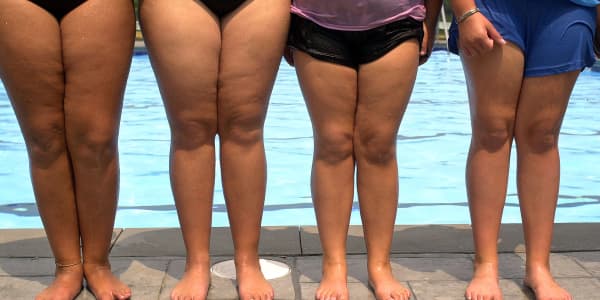
Why get a flu shot if it might not work?
That question bubbles up every year as influenza sweeps the nation. Over the past 10 years, the vaccine at its best was 60 percent effective, according to data from the Centers for Disease Control and Prevention. At worst, it was about 20 percent effective.
This year, the H3N2 flu has been the main culprit, and the vaccine has struggled to keep up with changes in the virus. The CDC estimates it may be about 30 percent effective against H3N2.
"There's a lot of good methodology, but it's not foolproof, so some years are better than others," said John Shiver, global head of research and development at Sanofi Pasteur, which produces the bulk of flu vaccines in the U.S. "This year is one of those years where H3N2 is a bit divergent from what's in the vaccine, so the vaccine is appearing to be less effective overall."
*Estimate from Nov. 2, 2015-April 15, 2016. **Interim 2016-2017 estimates.
Producing flu shots is a long, complex process. The U.S. Food and Drug Administration meets every February to choose what to put into the year's flu shot based on recommendations from the World Health Organization. They include three or four strains, since multiple viral strains can circulate throughout the season.
The FDA may pick a good match, but the influenza virus often mutates, sometimes so much that the vaccine elicits immune responses that do not recognize it and therefore struggle to fight it.
The virus can also mutate while it's developing in chicken eggs, according to research published in the journal Proceedings of the National Academy of Sciences in November.
"H3N2 viruses, in particular, have been technically more difficult [to] grow in eggs," a spokeswoman for flu vaccine maker GlaxoSmithKline said in a statement. "However, even if one vaccine component is not well matched, other components of the vaccine may remain fully effective to protect against the flu."
Building a better vaccine
Scientists dream of creating a universal flu vaccine that could be administered once and prevent sickness for a lifetime. Achieving that is likely still far off, but other improvements could be closer.
One strategy companies have tried is developing vaccines in other places outside traditional chicken eggs. Seqirus, the vaccine unit of Australian manufacturer CSL, produced cell-based flu vaccines at commercial scale at one of its facilities last year in what the company called an industry first.
Sanofi Pasteur last year acquired Protein Science, which makes Flublok, an influenza vaccine manufactured in insect cells. Now that Sanofi Pasteur has the product, the company will see if it can apply the process more broadly, Shiver said.
"It is an important step to move from the traditional way of making flu vaccines in eggs," he said. "Now, vaccines in eggs do work well overall. It's a complicated, very labor-intensive process, but actually it is challenging to move entirely away from a generation of vaccines that are so well-established to something different."
Another approach scientists have tested is targeting the bottom of a protein on the surface of flu viruses, which is more stable than the ever-changing top that most vaccines currently target. Several researchers are developing experimental approaches.
GSK has partnered with a group of researchers at the Icahn School of Medicine at Mount Sinai trying to elicit antibody responses against the bottom part of the protein. The team has tested its vaccine in animals and will try it in humans next.

Vaccitech, which spun out from the University of Oxford's Jenner Institute, is testing its attempt at a universal vaccine in clinical trials. It goes after the bottom part of the protein on flu viruses to boost T-cell response, rather than the traditional antibody response. GV, the venture arm of Google parent Alphabet, is an investor.
Sanofi Pasteur has entered a number of partnerships. One is with researchers at the University of Georgia, who have compiled genetic sequences from flu strains over multiple seasons to create a vaccine that could protect against a broader range than ones used today.
Sanofi Pasteur has also partnered with biopharma company Berg to use artificial intelligence to learn more about flu vaccine responses. The range of the company's efforts reflects the uncertainty around the best way to create a more effective shot.
"In terms of making a universal flu vaccine, I can tell you we've been trying to do this for 40 years, so far without success," said Dr. Paul Offit, professor of pediatrics at the Children's Hospital of Philadelphia. "It's the Golden Fleece of influenza vaccine ... certainly when we can figure it out, we will have done a lot of good, but it's been really hard."
These tests are still exactly that: tests. Even if they are successful, it could be years before an improved vaccine reaches the market. So for now, doctors and public health groups suggest sticking with the flu shot as the best way to protect against the virus.





